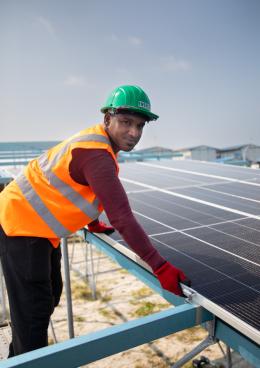CTF Co-financing Ratio by Technology
This Results Deep Dive explores results achieved by the Clean Technology Fund (CTF), focusing on CTF’s effectiveness in mobilizing substantial and diverse volumes of co-financing for the demonstration, deployment, and transfer of low-carbon technologies with significant potential to reduce long-term
...This Results Deep Dive explores results achieved by the Clean Technology Fund (CTF), focusing on CTF’s effectiveness in mobilizing substantial and diverse volumes of co-financing for the demonstration, deployment, and transfer of low-carbon technologies with significant potential to reduce long-term greenhouse gas (GHG) emissions. As of December 2022, CTF’s committed portfolio entailed US$5 billion of own-account debt and equity investments, complemented by US$51 billion of expected public and private co-investment, geared to deliver large and/or utility-scale clean technology projects in 29 low- and middle-income countries. Over the past 15 years, the cost for many clean and renewable energy technologies has fallen significantly. For example, the cost for large scale solar photovoltaic (PV) technology has fallen by over 89 percent between 2009 and 2019, while the cost for wind energy has fallen by over 50 percent. In many instances, however, the deployment of such projects in emerging economies still entails considerable first-mover costs and risks, such as lack of enabling infrastructure, weaknesses in local capital markets, and unpredictable revenue streams for such new investment.
These challenges and risks help drive a large, persistent, financing gap. Additional annual investments of over US$4 trillion are required by 2030 to achieve net-zero emissions by 2050, hindering national ambitions for low carbon futures. In response, a primary objective of the various climate funds active today (including those operating under the CIF; the Green Climate Fund (GCF); the Global Environment Facility (GEF); and others), is to facilitate co-investment from untapped public and private sources via the provision of concessional financing and holistic investment packages (e.g., technical assistance, policy support, etc.), each of which act to improve the risk-to-return profiles of investment opportunities.





